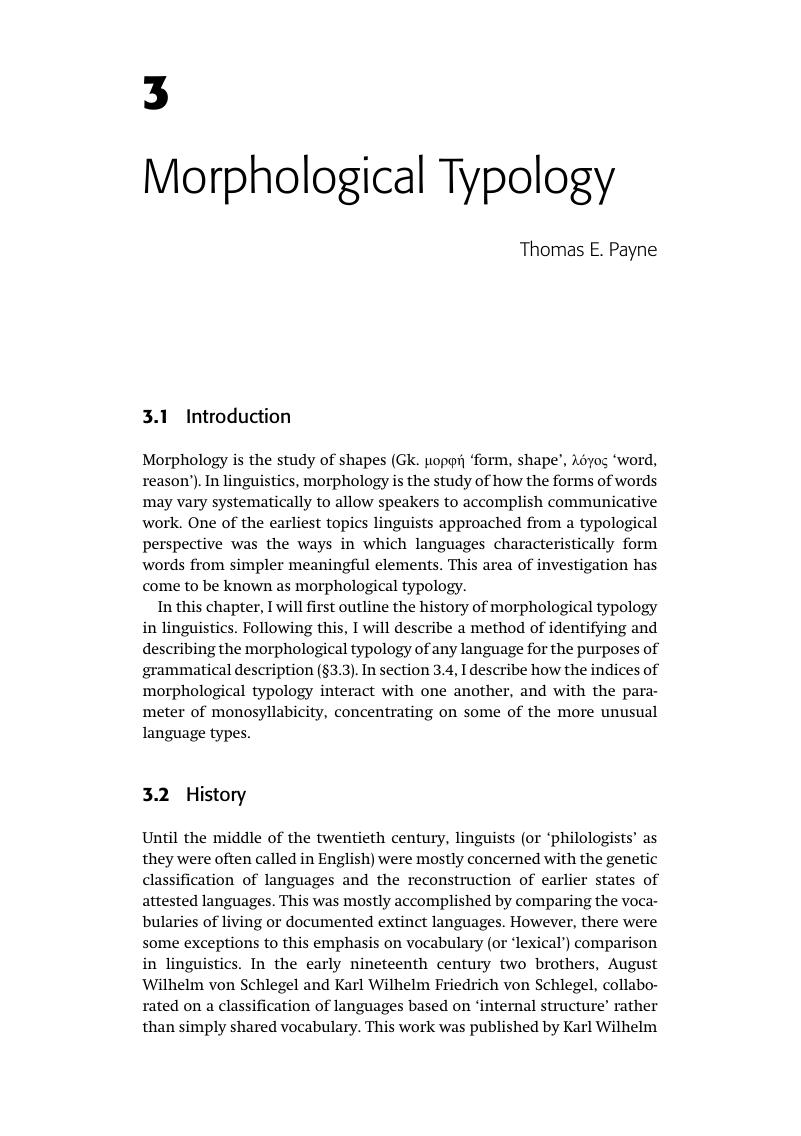Book contents
- The Cambridge Handbook of Linguistic Typology
- Cambridge Handbooks in Language and Linguistics
- The Cambridge Handbook of Linguistic Typology
- Copyright page
- Contents
- Figures and Diagrams
- Tables
- Maps
- Contributors
- Acknowledgements
- Abbreviations
- 1 Introduction: Linguistic Typology – Setting the Scene
- Part I Domains of Linguistic Typology
- 2 Phonological Typology
- 3 Morphological Typology
- 4 Typology and Historical Linguistics
- 5 Sociolinguistic Typology: Social Structure and Linguistic Complexity
- 6 Typology and Grammaticalization
- 7 Sign Language Typology
- 8 Typology of Mixed Languages
- 9 Typology of Creole Languages
- 10 Typology of Secret Languages and Linguistic Taboos
- Part II Typology of Grammatical Categories
- Part III Typological Profiles of Linguistic Areas and Language Families
- Index of Authors
- Index of Languages, Language Families and Linguistic Areas
- Index of Subjects
- References
3 - Morphological Typology
from Part I - Domains of Linguistic Typology
Published online by Cambridge University Press: 13 April 2017
- The Cambridge Handbook of Linguistic Typology
- Cambridge Handbooks in Language and Linguistics
- The Cambridge Handbook of Linguistic Typology
- Copyright page
- Contents
- Figures and Diagrams
- Tables
- Maps
- Contributors
- Acknowledgements
- Abbreviations
- 1 Introduction: Linguistic Typology – Setting the Scene
- Part I Domains of Linguistic Typology
- 2 Phonological Typology
- 3 Morphological Typology
- 4 Typology and Historical Linguistics
- 5 Sociolinguistic Typology: Social Structure and Linguistic Complexity
- 6 Typology and Grammaticalization
- 7 Sign Language Typology
- 8 Typology of Mixed Languages
- 9 Typology of Creole Languages
- 10 Typology of Secret Languages and Linguistic Taboos
- Part II Typology of Grammatical Categories
- Part III Typological Profiles of Linguistic Areas and Language Families
- Index of Authors
- Index of Languages, Language Families and Linguistic Areas
- Index of Subjects
- References
Summary

- Type
- Chapter
- Information
- The Cambridge Handbook of Linguistic Typology , pp. 78 - 94Publisher: Cambridge University PressPrint publication year: 2017



